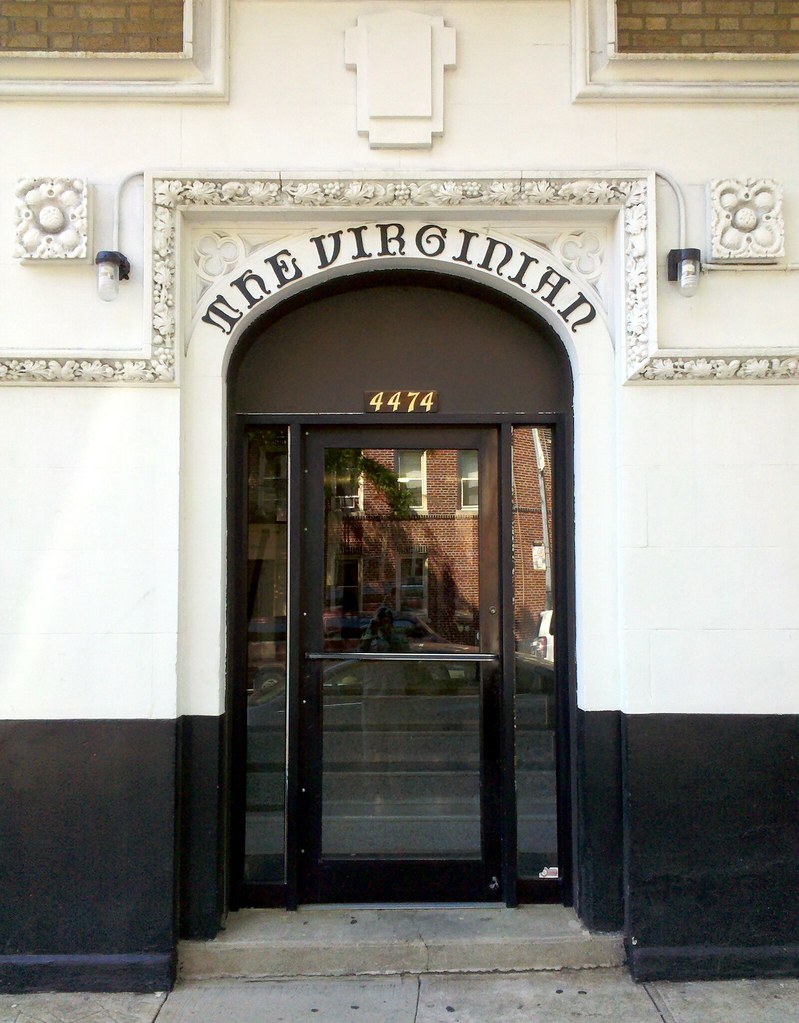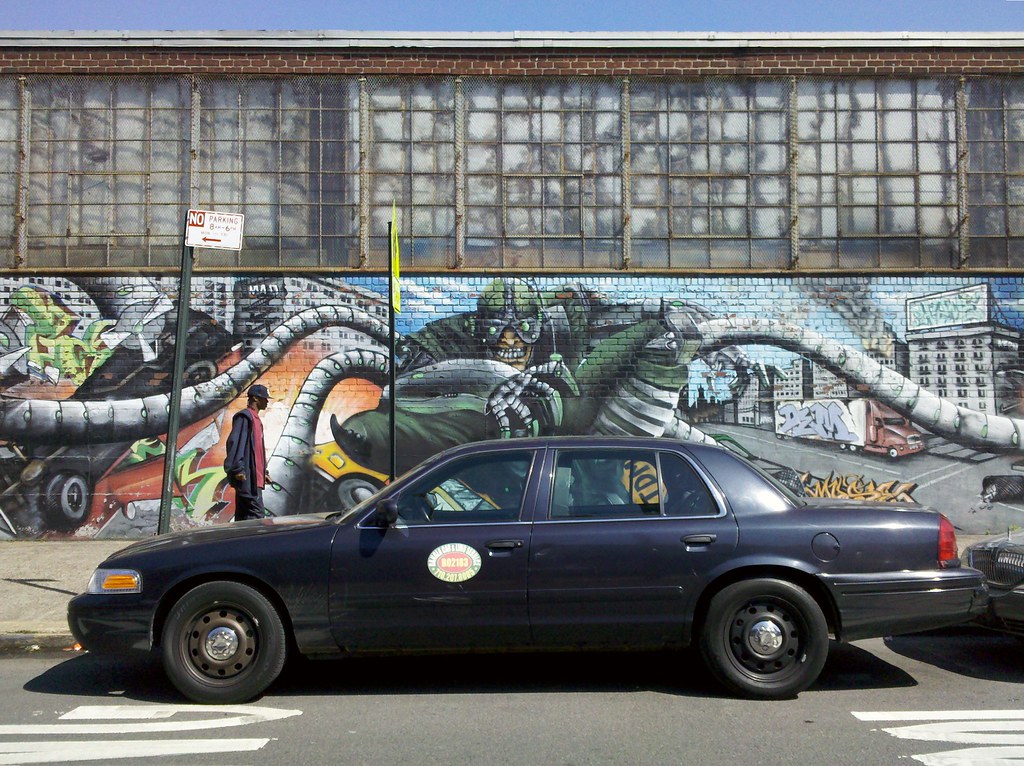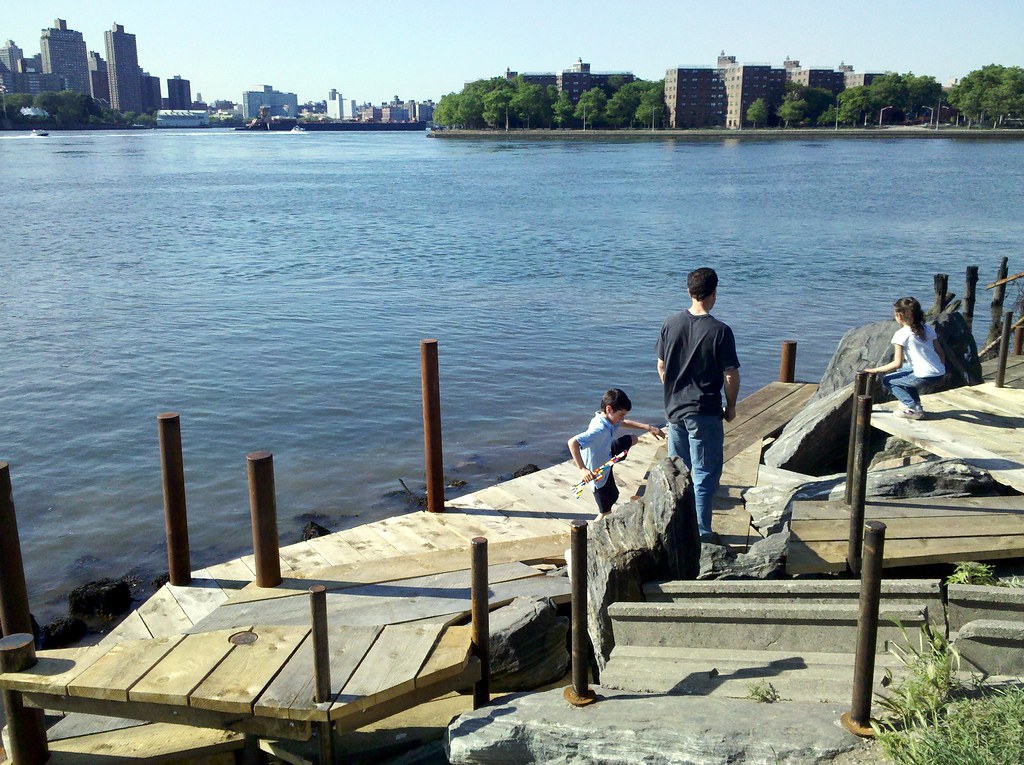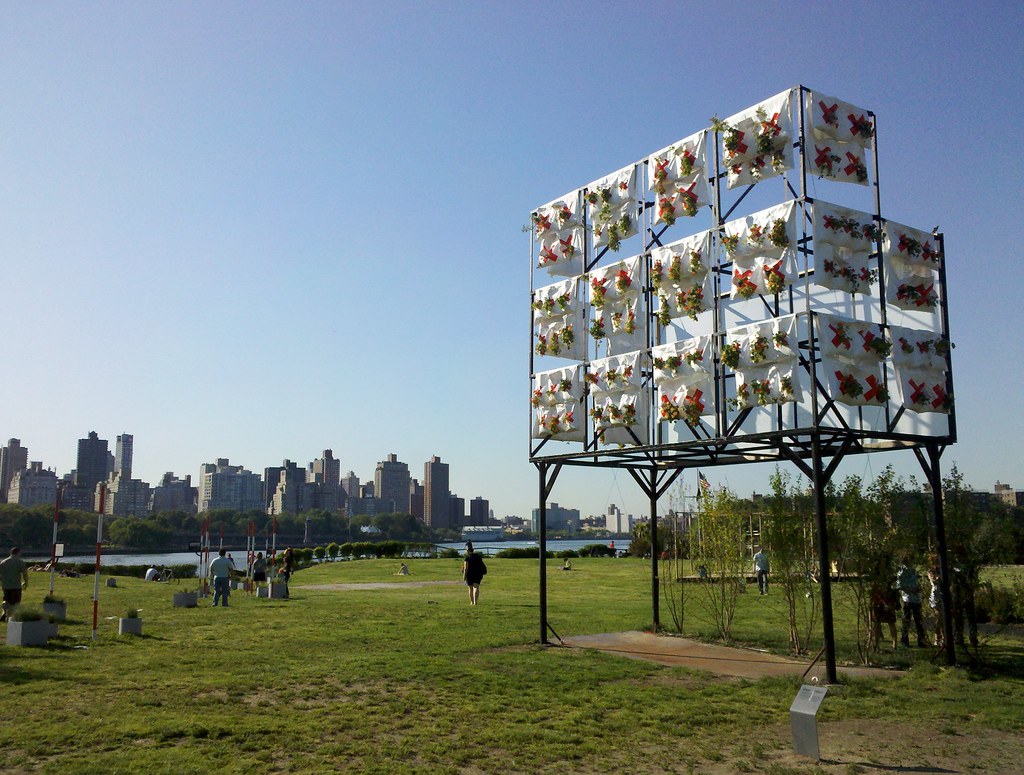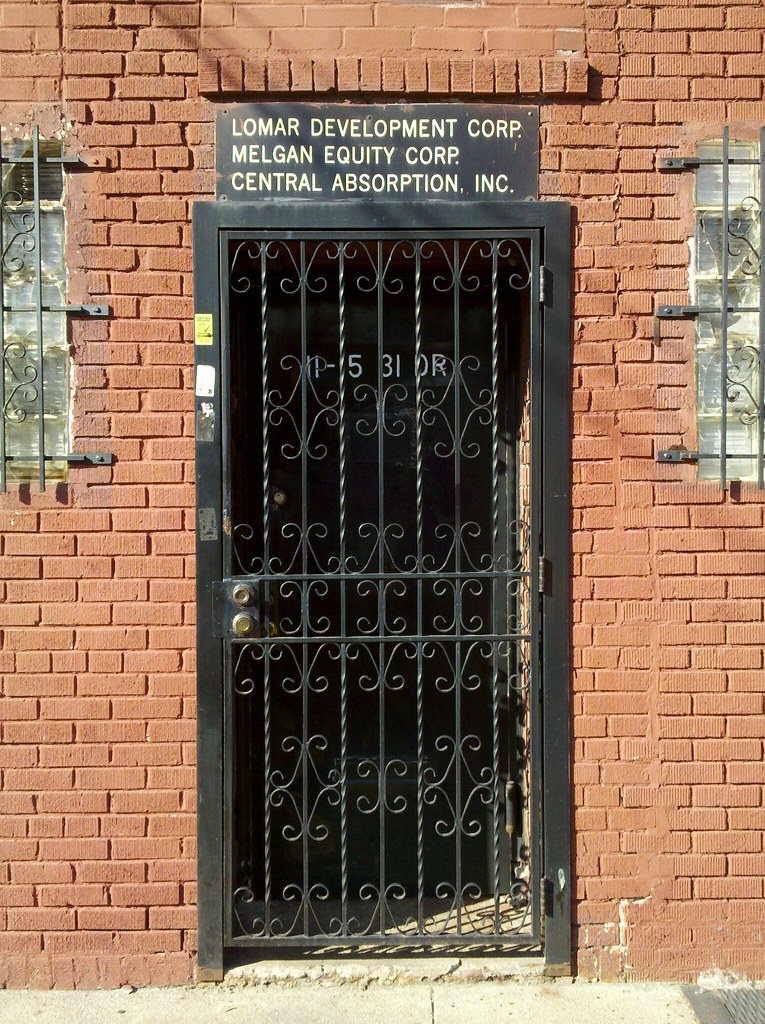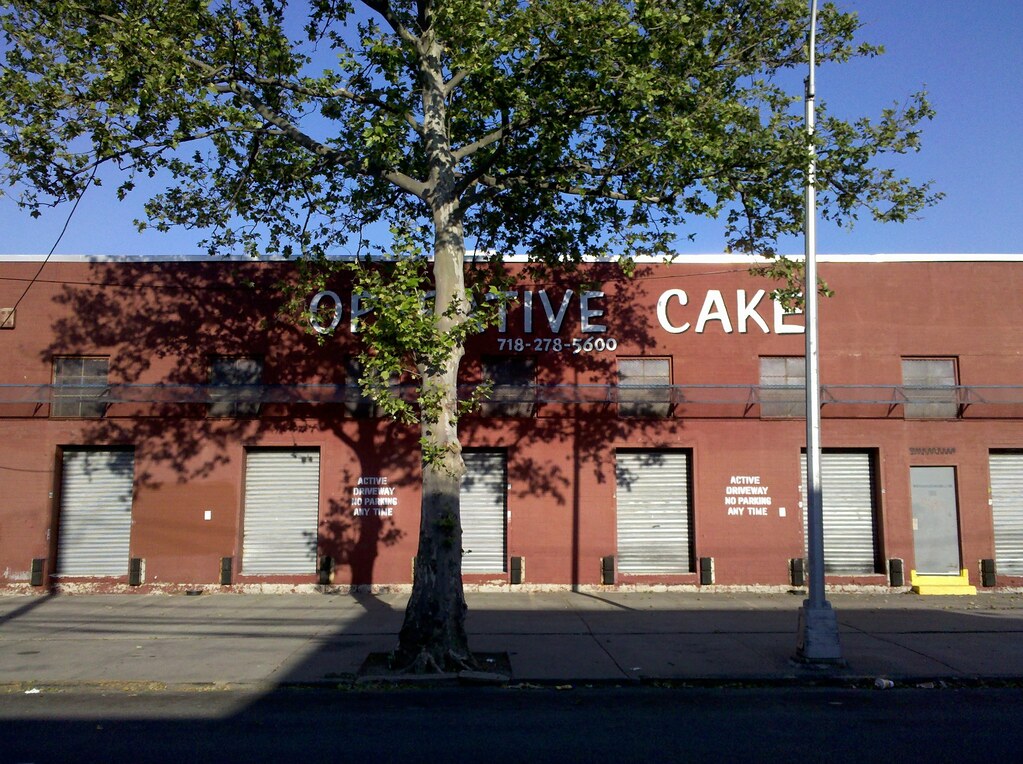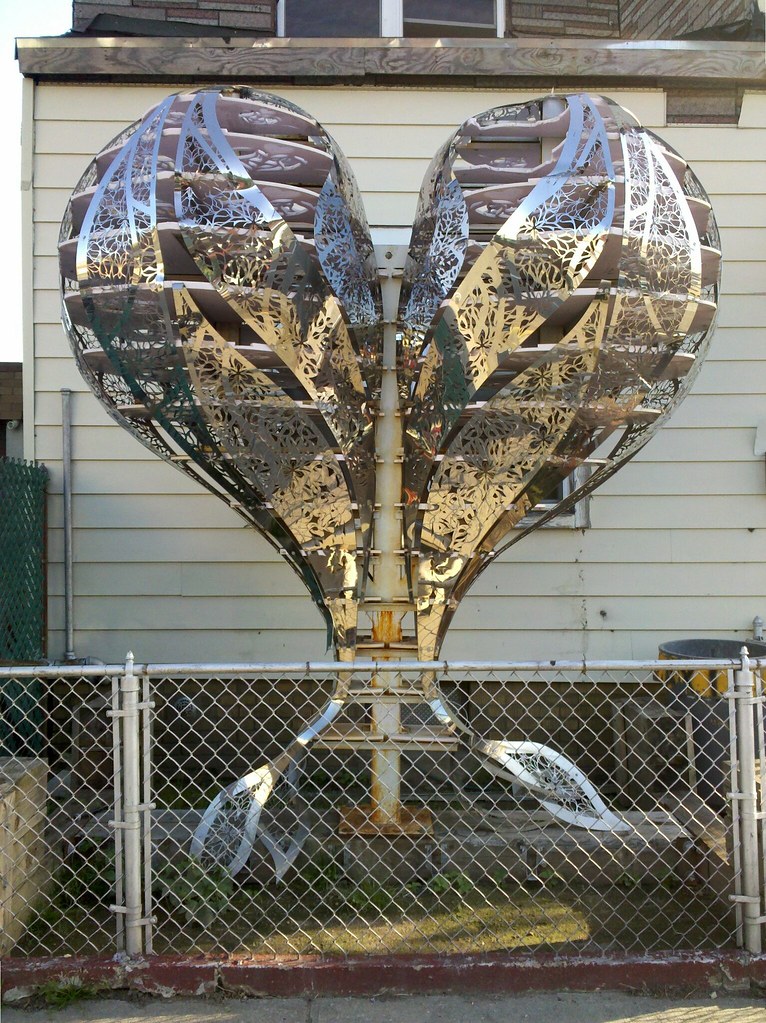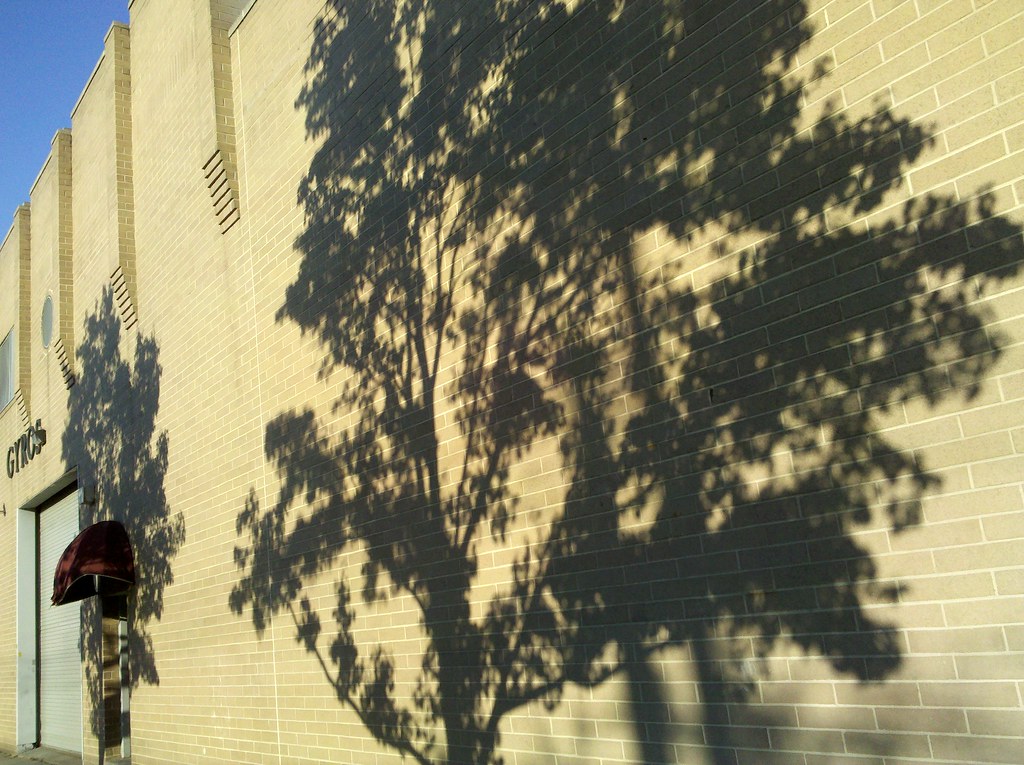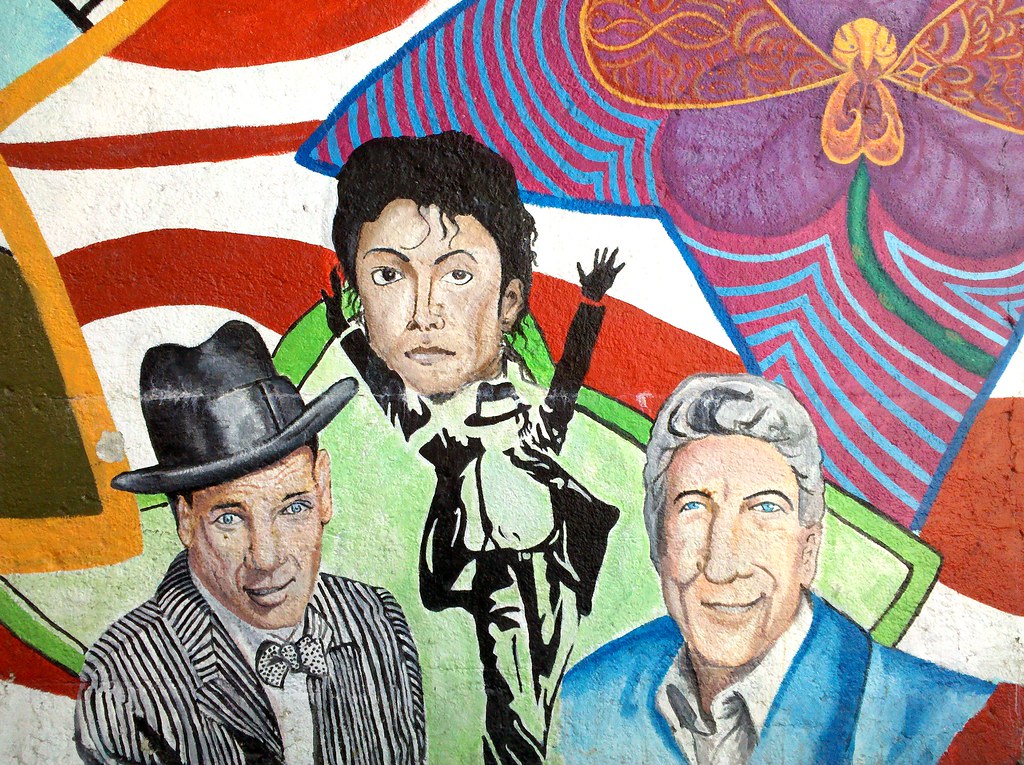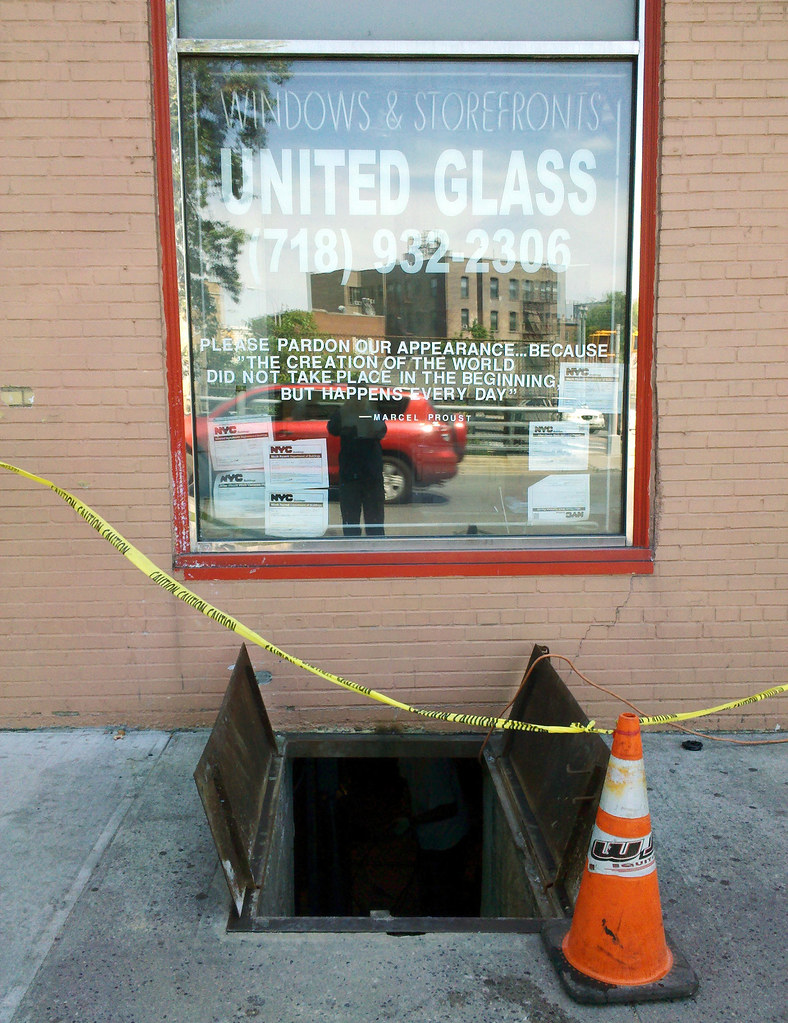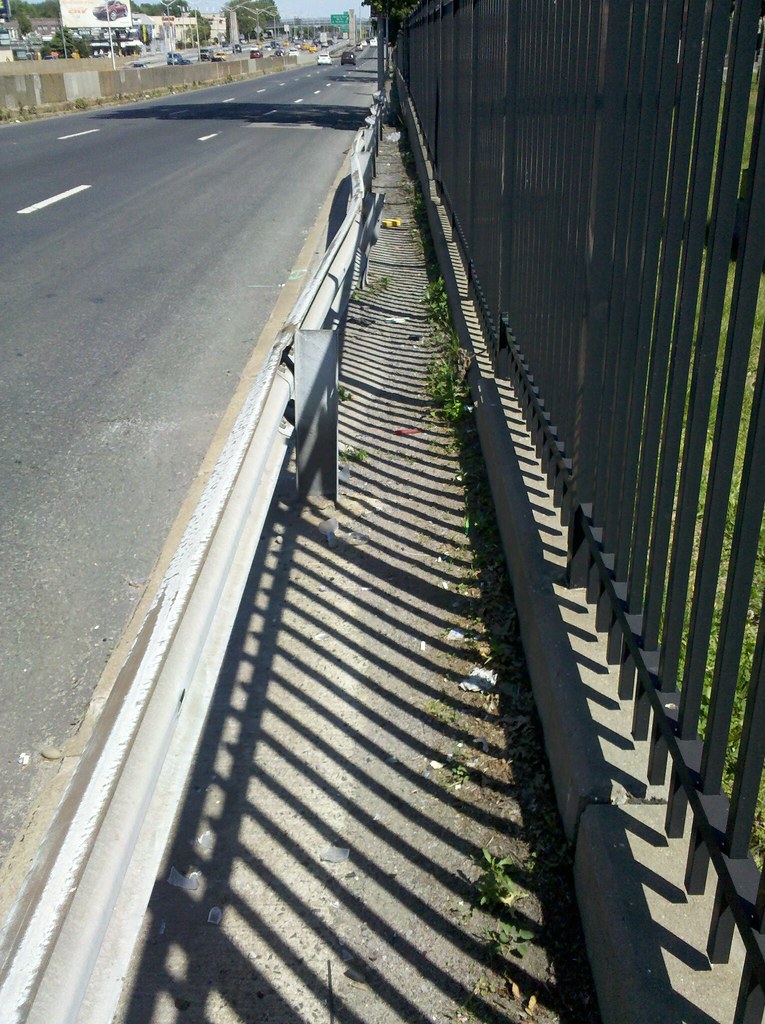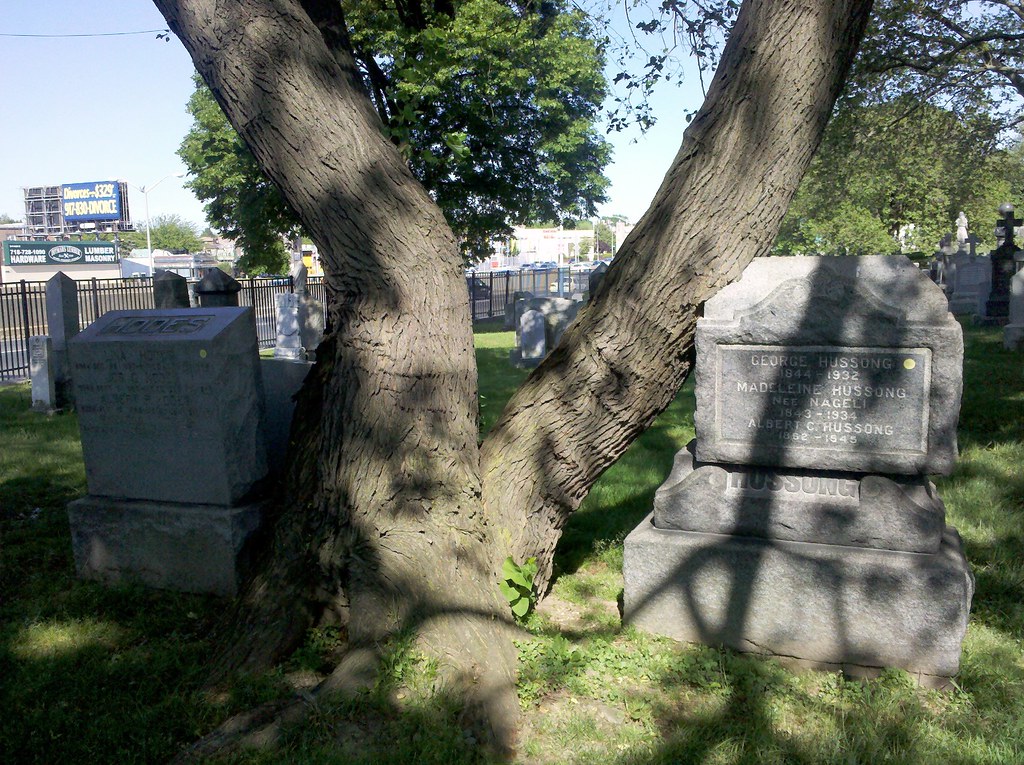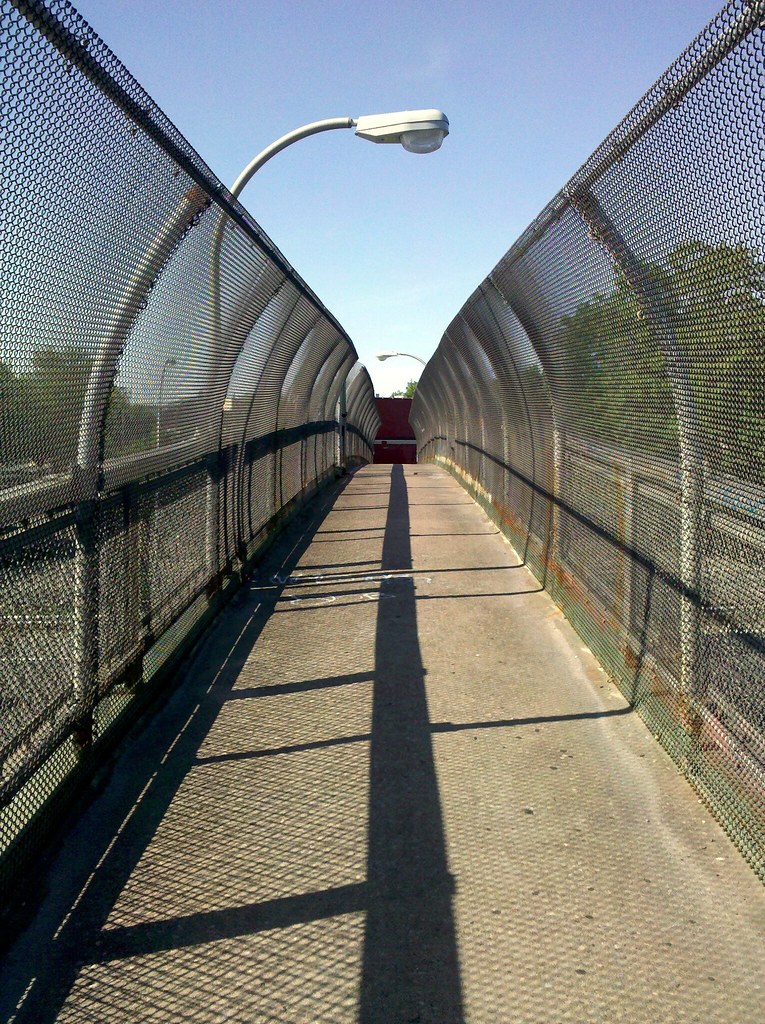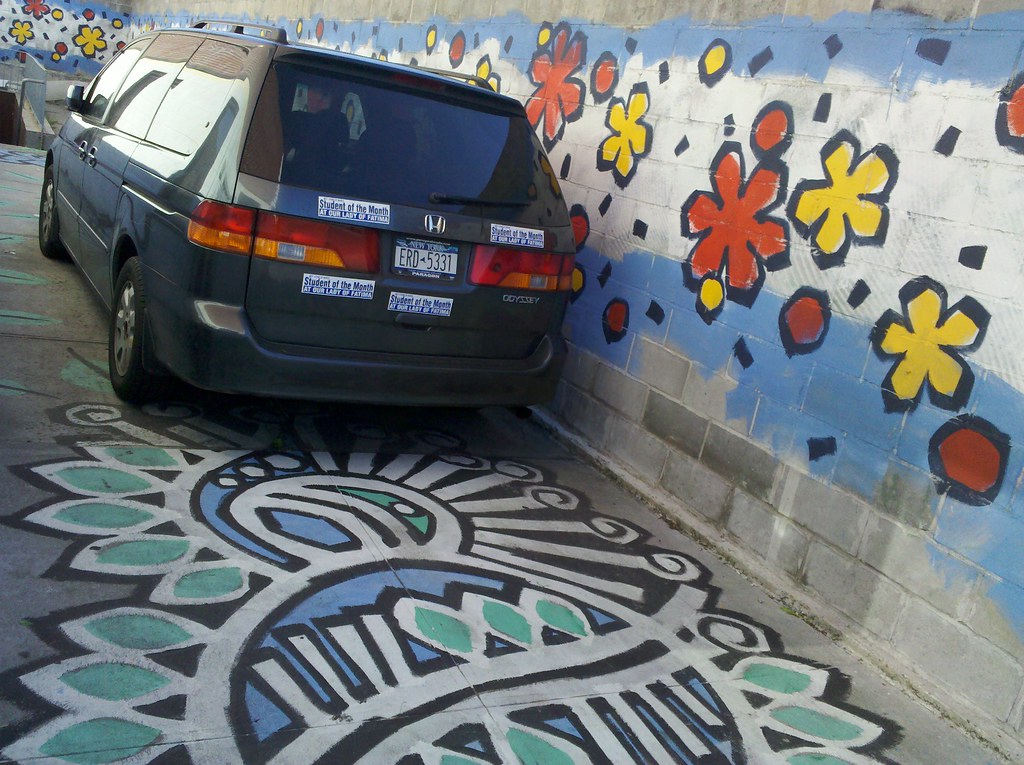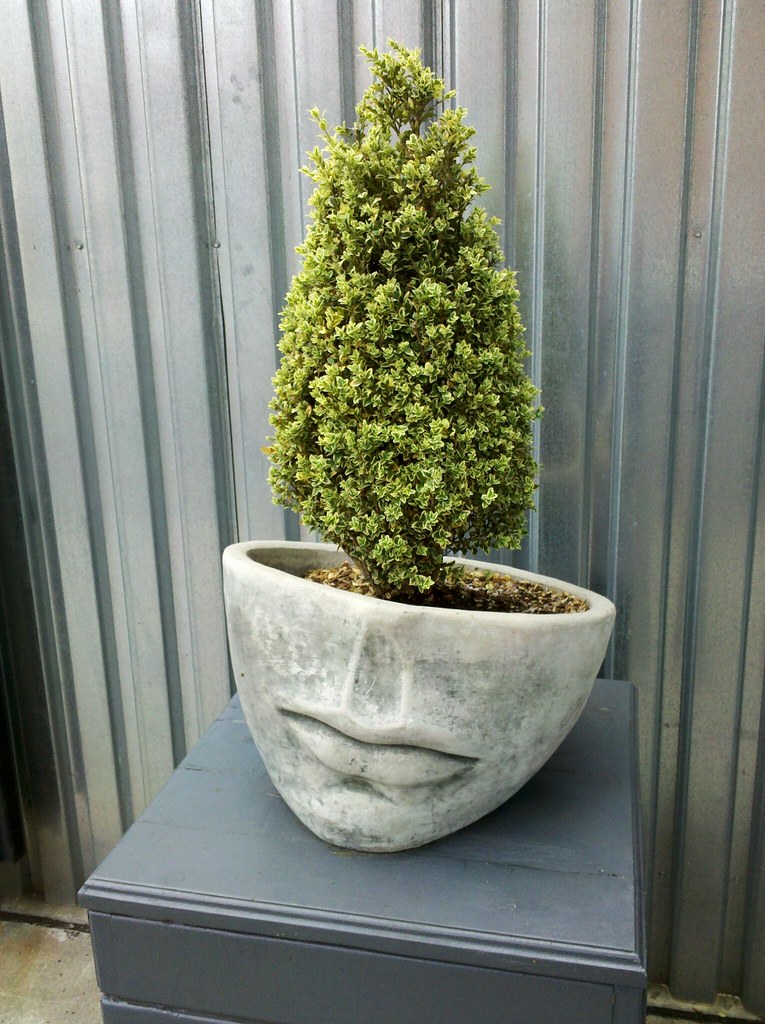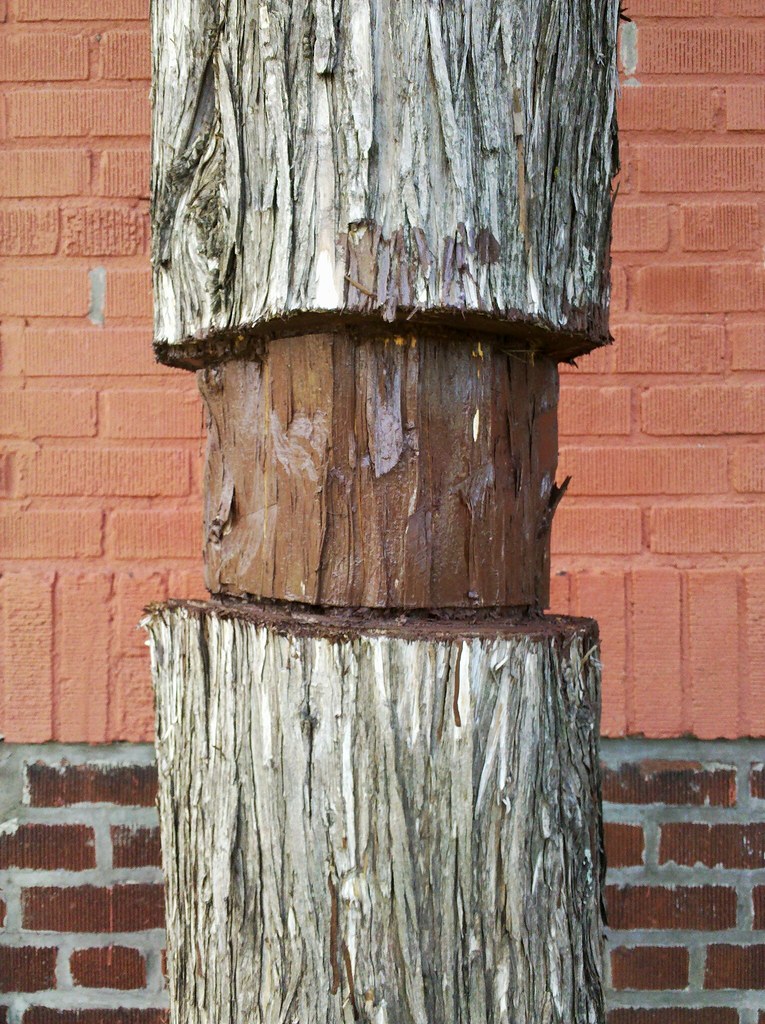
After getting by on its questionable merits for more than a quarter of a century, this gigantic mutated chain-link fence is finally going the way of the dodo, much to the artist's chagrin.
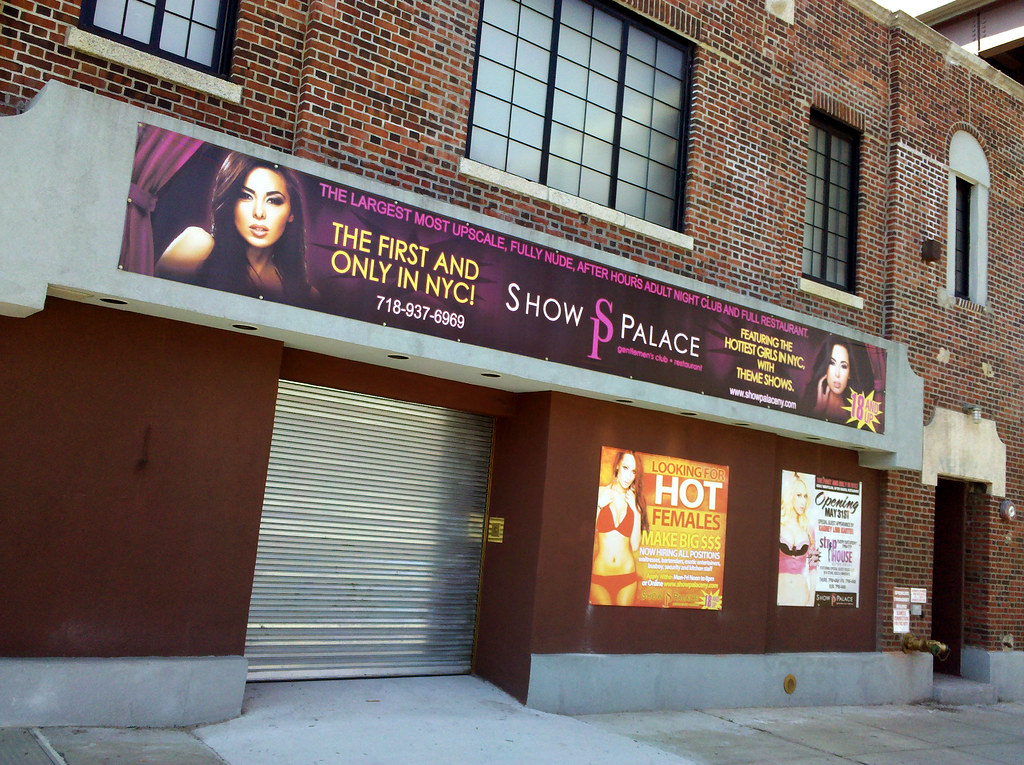
After twice having its application for a liquor license rejected (thanks to strenuous opposition from local community groups here in rapidly gentrifying Long Island City*), this was-just-gonna-be-a topless bar has decided to go fully nude, a state of undress allowed only in establishments that do not serve alcohol. Opening May 31!
* The immediate surroundings of this club are hardly gentrified, however.
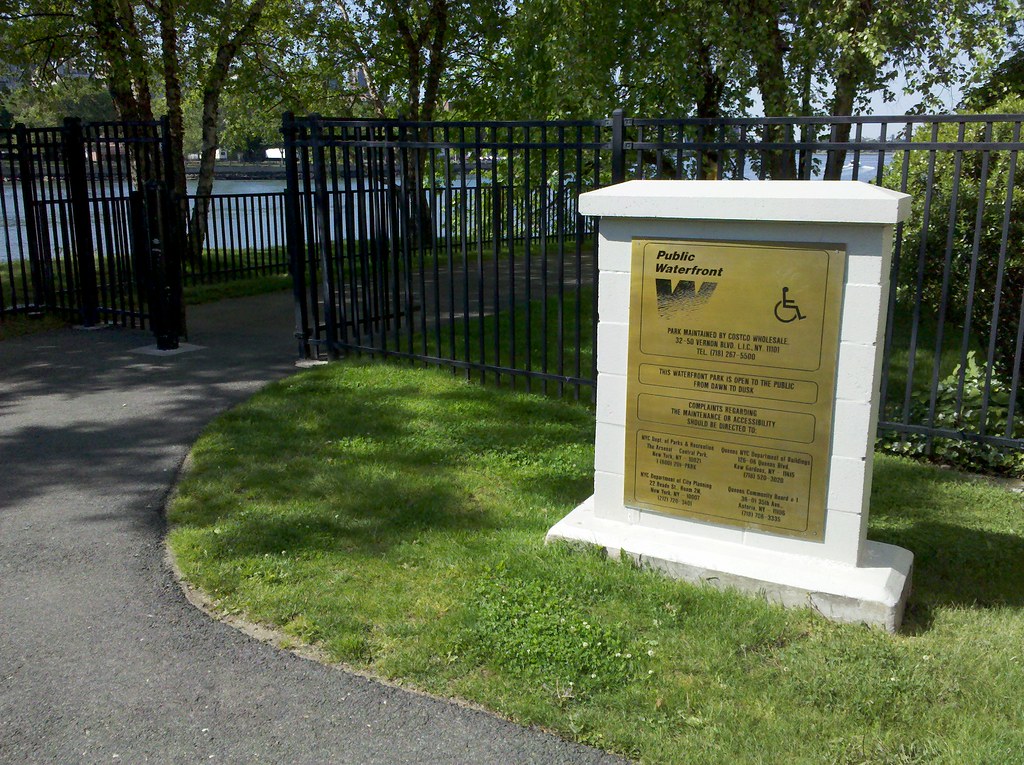
After making my way down this long, dusty, Costco-adjacent parking lane (which looks like it's off limits to the public; I only walked it because Google labeled it a road), I came upon this entrance to a waterfront path. It's maintained by Costco, fulfilling a requirement of the deal that allowed them to build here.
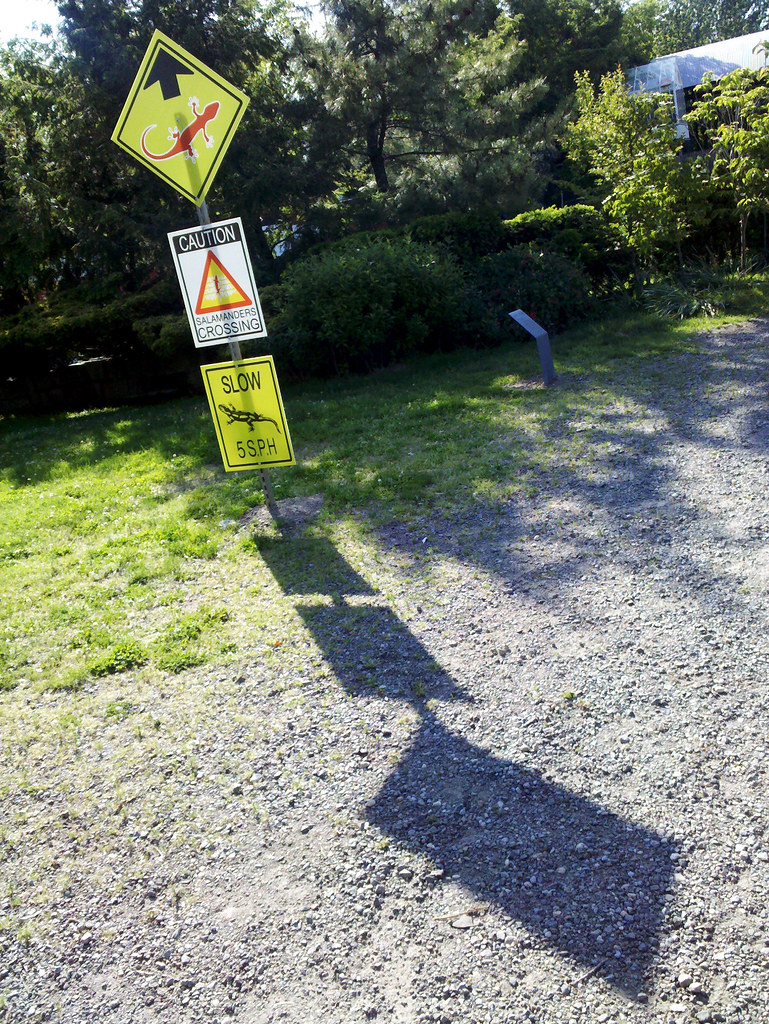
These signs are located just inside the gate of Socrates Sculpture Park, which was an illegal dumping ground as recently as 1986, when some artists and community members took charge and began transforming the site into the outdoor exhibition space and public park that it is today.
I don't believe there are actually any salamanders in this area (although plenty do exist in more forested parts of the city); the Salamander Superhighway (which is a salamander-friendly tunnel constructed beneath the gravel path, seemingly eliminating the need for warning signs) is just intended to call attention (I guess) to a worldwide decline in the populations of salamanders and other amphibians.
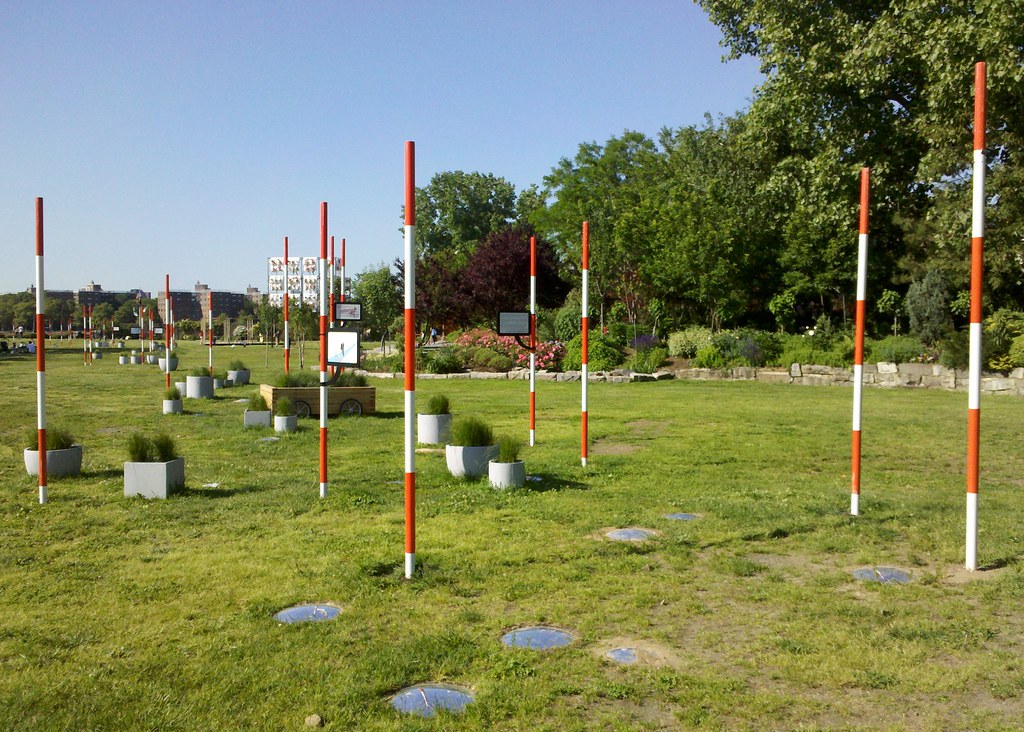
Before being consumed by the sewer system, Sunswick Creek emptied into the East River here at what is now Socrates Sculpture Park (which explains all the poles).

This "new co-working space" built up in a poplar tree boasts views of Manhattan, Wi-Fi access, and "locally produced power" (which I assume is a reference to the nearby Ravenswood power plant). Supposedly you can book a spot here online, but I can't figure out how.
Keep your eyes fixed on the far right side of the video. Can you see it?

You can see crossovers swooping between the outer local tracks and the center express track. Just behind me are two more crossovers; collectively, these four inter-track connections allows trains from any of the three tracks to access either side of the platform at the nearby terminal station of the Astoria Line.
Generally speaking, this is how trains get from one side of the tracks to the other when they change direction at the end of the line, and it's how two trains coming from the same direction can end up on different sides of the platform at the last station.
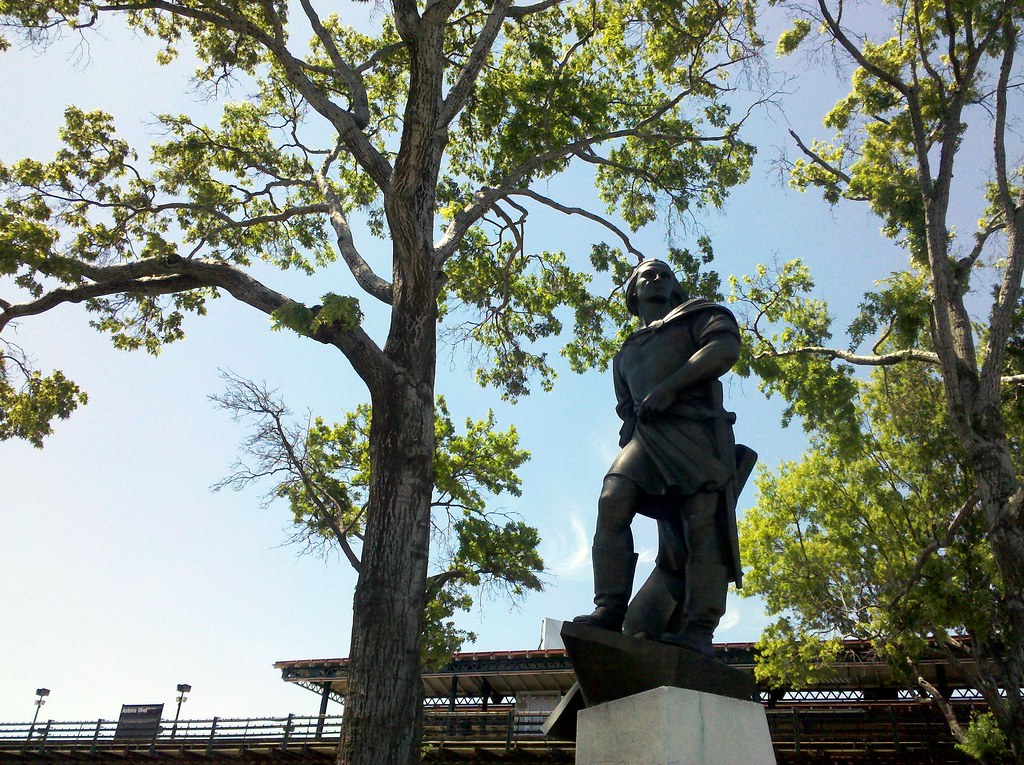
This monument to Christopher Columbus was unveiled in 1941, but no one had yet secured funding for a pedestal at that point. Residents of the area became worried that, without a place to mount it, their statue might be taken and used as scrap metal in the massive World War II recycling effort, so they hid it in the basement of Queens Borough Hall. After the war, as you can see, they were able to raise enough money for a stone base on which the sculpture was permanently installed.
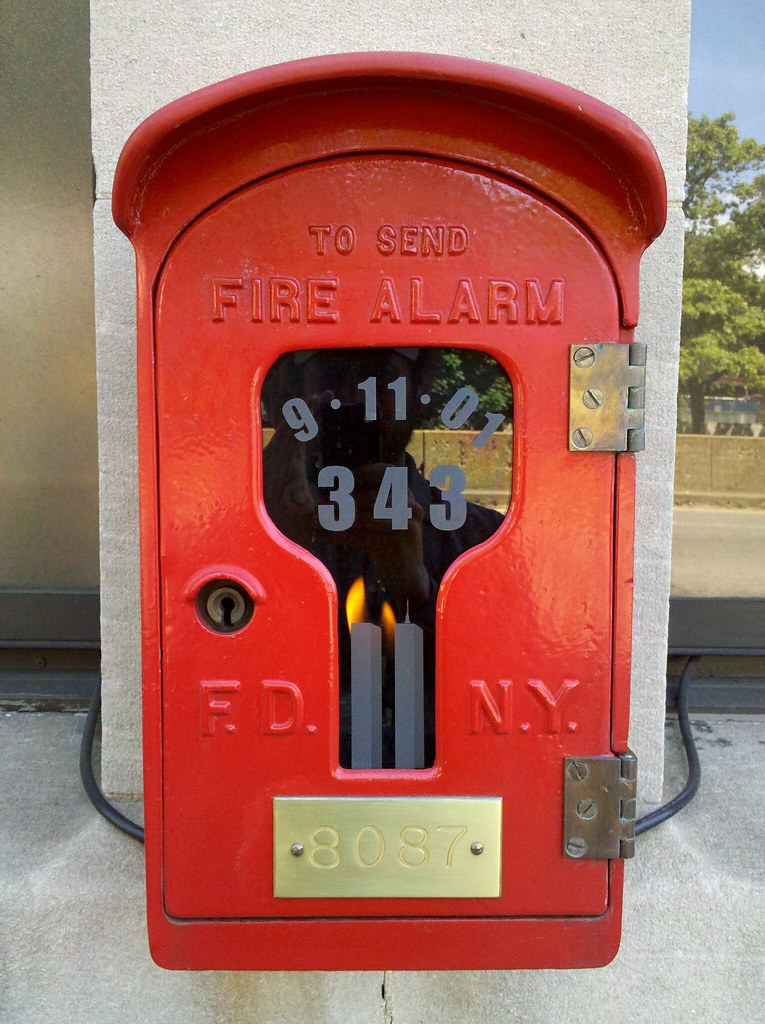
This converted call box is mounted outside FDNY Engine Company 263 and Ladder Company 117. Also on the firehouse wall is a poster with photos of all 343 firefighters who died on 9/11.
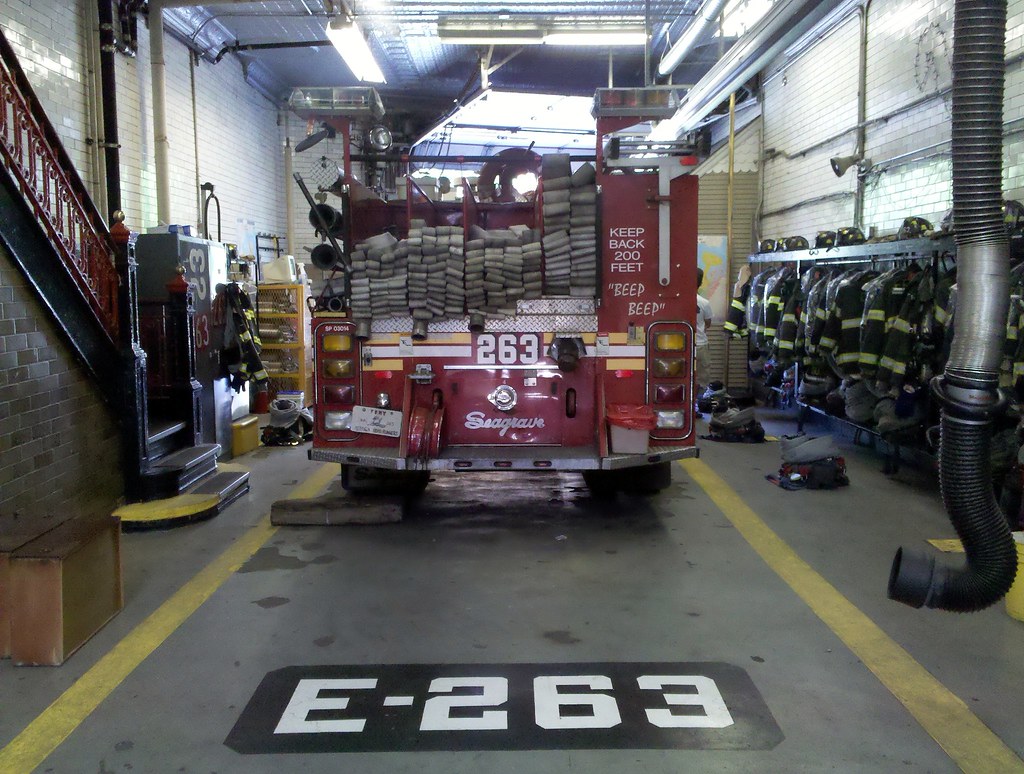
I was given an impromptu tour by a fireman who was just proud of his job and eager to share. And possibly a little bored. His counterpart next door at Ladder Company 117 also served as an excellent tour guide, it should be noted. Thanks to the two of them, I finally learned the difference between an engine company and a ladder company.

This photo doesn't do it justice; look how narrow the entrance to this lot is!
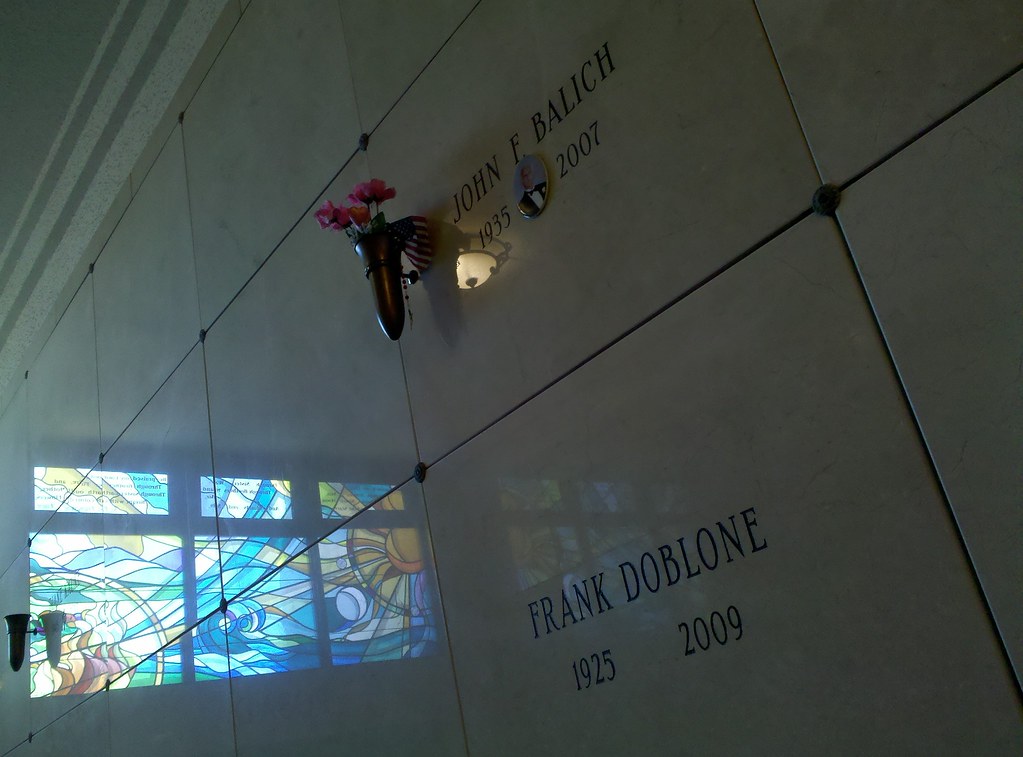
This cemetery is the final resting place of the musician Scott Joplin, known primarily for his ragtime compositions, including "Maple Leaf Rag" and "The Entertainer". In fact, as it turns out, St. Michael's just held its annual musical tribute to him yesterday!
Joplin achieved some fleeting fame during his lifetime, but was largely forgotten in the decades after he died of syphilis in a New York City mental institution in 1917. He was buried in a pauper's grave here at St. Michael's, which remained unmarked until the mid-1970s, when a growing revival of interest in his music reached fever pitch.
This renewed appreciation for his work led to a posthumous Pulitzer Prize, the first full staging of his opera Treemonisha, and a starring role for several of his ragtime pieces in the soundtrack of The Sting. Even today, you can hear his music echoing out on the streets of America — every time an ice cream truck drives by blaring the first section of "The Entertainer" on endless repeat.
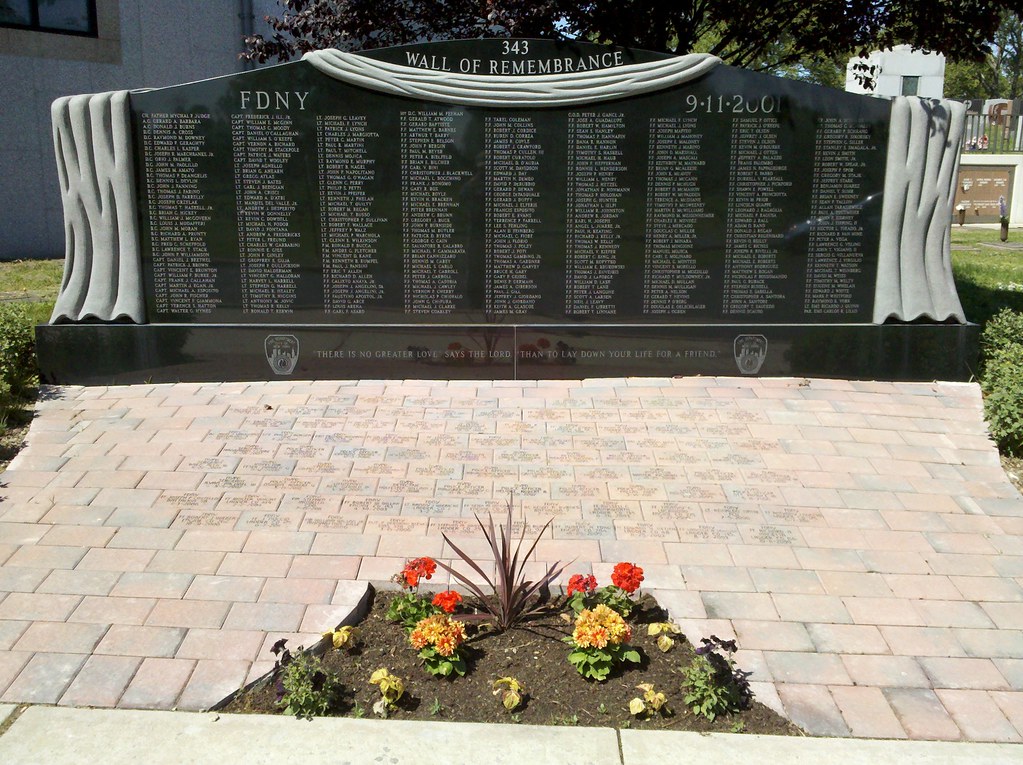
This is just one section of an expansive 9/11 memorial at St. Michael's Cemetery. Also included are monuments dedicated to the PAPD (Port Authority Police), a PAPD bomb-detection dog, the NYPD, the FDNY (again), and Queens firefighters specifically, as well as a first responder memorial not related to 9/11.
Many of the names on these monuments (though not the monument pictured here) are accompanied by small medallions with QR codes printed on them. If you scan one of those codes, you are taken to a website with information and memories about the corresponding individual. (The company that provides this service charges $100 per medallion!) You might be able to spot some of the QR codes in the circles next to the names on the monuments linked above. Check out Sirius's memorial for a good example.
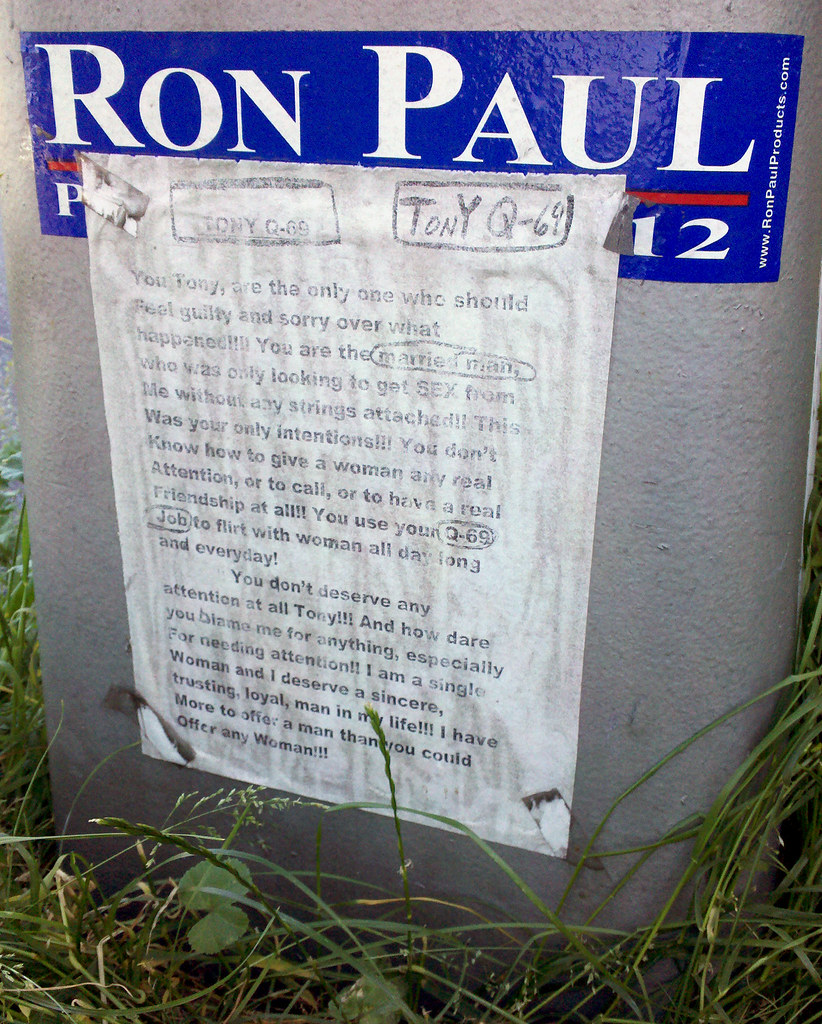
Baffling riders and passersby for months on end, these mysterious postings, ubiquitous along the Q69 bus route, were no match for the investigative prowess of the New York Post. Flyers defending Tony have recently come onto the scene, and have inspired an enlightened exchange of ideas.
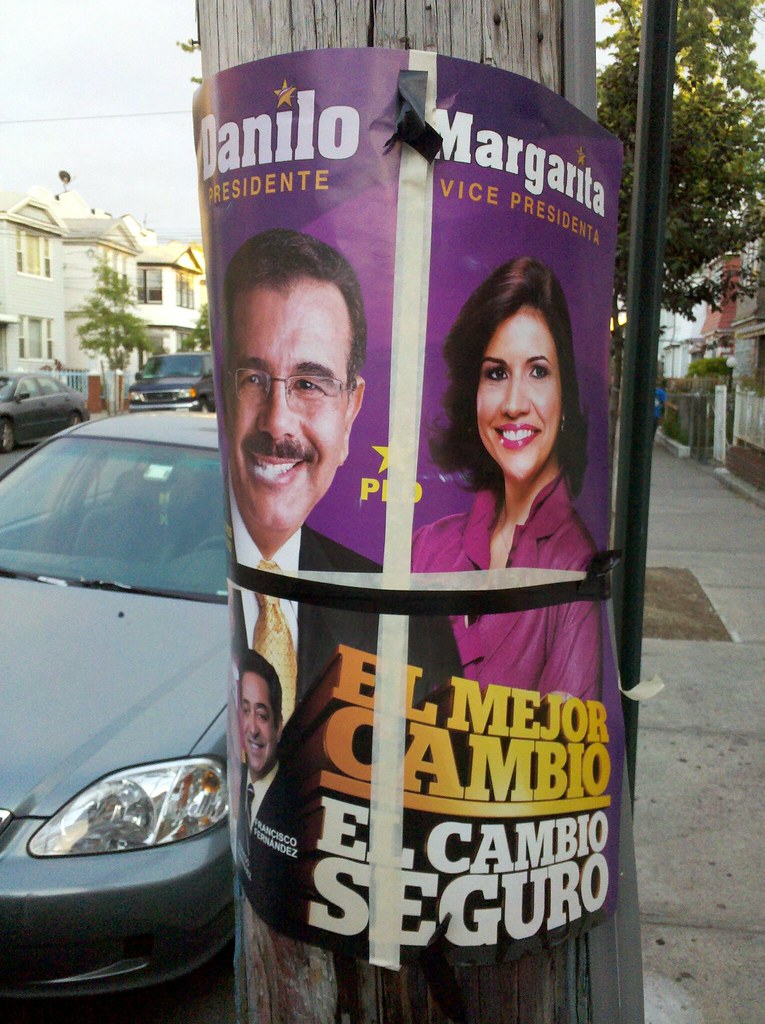
After months of seeing these signs, we've finally reached election day. And the winner is...
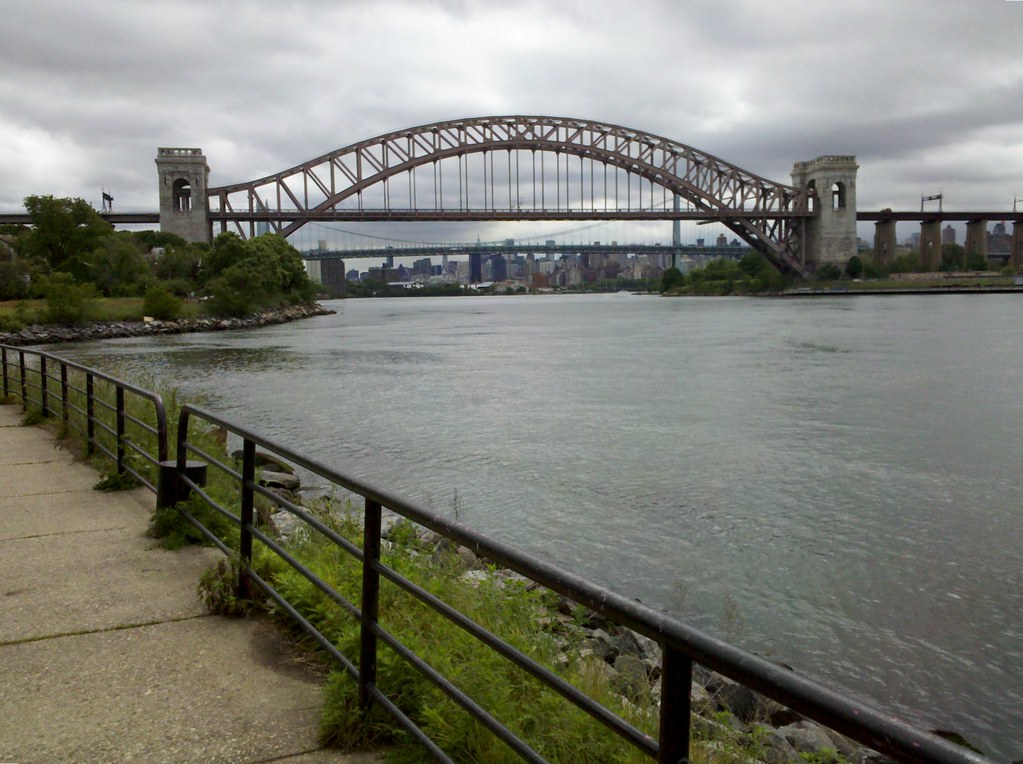
That's the name of both the steel arch railroad bridge and the waterway it spans. You can also see the Queens leg of the Triborough Bridge in the background.
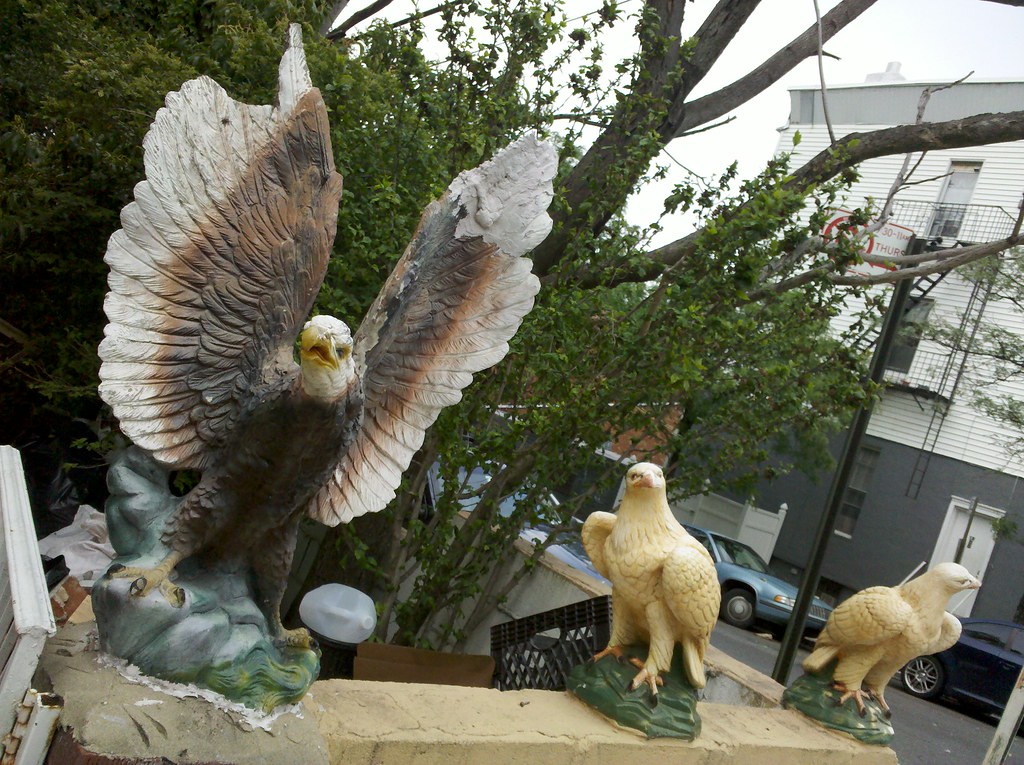
These three avian sculptures are merely the public face of an extensive collection of outdoor three-dimensional bird art. Most of the flightless facsimiles sit in the driveway and backyard; you can start to get a sense of things from this Street View image. The woman who lives here claims that her statues are always being damaged or stolen, while her exasperated nephew says he can't ever get her to throw out anything. I think I may have a lead on your bird thief, ma'am...
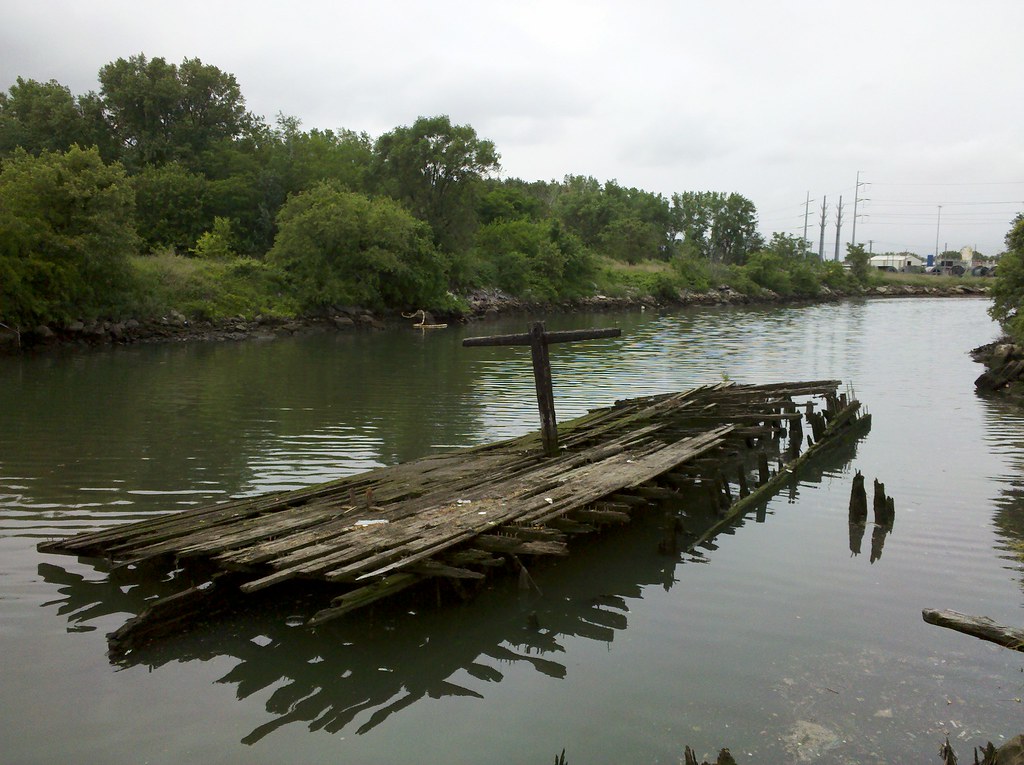
Once upon a time, the famed Steinway piano company had the wood for its pianos shipped in the form of log rafts, floated down from New England to its factory (located just out of frame to the right) here on Steinway Creek. These waters were actually quite worldly in those days; the old Astoria lumber companies would order exotic wood from around the globe and have the logs delivered by steamers into holding pens at the mouth of the creek. Here's a 1925 photo showing the factory and the creek, as well as the holding pens.
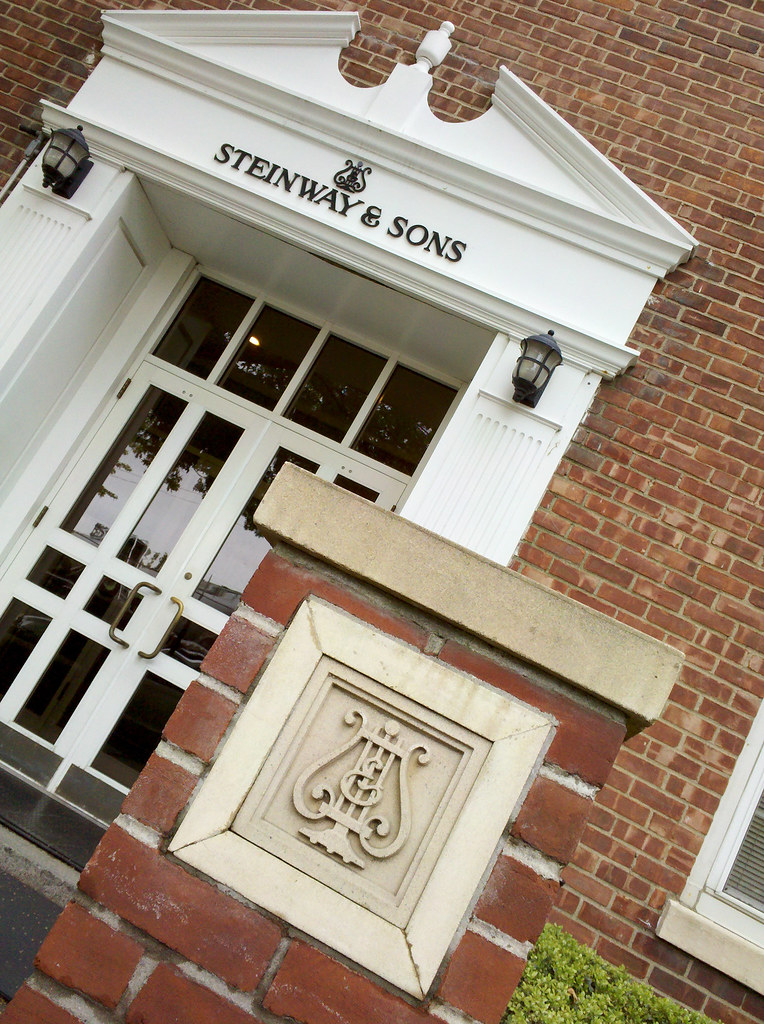
Henry Steinway founded Steinway & Sons in 1853, his first workshop a small loft on Varick Street in Manhattan. Steinway pianos quickly gained a reputation for exceptional craftsmanship and "wondrous beauty"; here is a breathless account of the 1855 exhibition at which the theretofore unknown Steinway piano unanimously won the favor of the judges, who were mesmerized by "the singular merits of the strange instrument". This cartoon depicts the craze for Steinways that developed after their widely renowned showing at the 1867 Exposition Universelle in Paris, which established the company as the world's premier piano-maker.
After Henry Steinway's death in 1871, his son William moved the company's operations across the East River to this location in what is now Astoria, Queens, where he built an entire town to house the factory's workers. Steinway Village, as it was called, counted among its amenities a post office, church, library, kindergarten, fire department, and trolley line.
The piano-making process has remained largely unchanged here in the intervening 140 years. You can read all about it in this extraordinary nine-part series following the construction of one concert grand piano over a period of many months at the factory.

Here we are again at the surprisingly delightful Bowery Bay Water Pollution Control Plant, whose workers have been known to dominate the city's annual Sludge Olympics.

I have long been perplexed by this artificial-looking hill north of 19th Avenue in eastern Astoria, just west of the Rikers Island Bridge. It's the fairly large (15 acres or so) treed area visible here, and you can see its topography, quite striking in this otherwise flat area, here.
It's owned by the Port Authority, according to numerous "No Trespassing" signs posted on the fence that surrounds it. Much of LaGuardia Airport, operated by the Port Authority and sitting just across Bowery Bay, was constructed on landfill from Rikers Island; maybe this was an intermediate site where dirt was stored after being transported from Rikers. Or perhaps this was once a landfill itself — this map makes it look like that may be the case.
The possibilities are many, but possibilities don't pay the bills. Or something like that. For the time being, the true origin of this little mountain remains shrouded in a mist of maybes.
UPDATE: The this-was-a-landfill hypothesis has taken the lead! (See comments below.)
UPDATE: I received an email from a current Port Authority employee saying that this hill is known internally as Ingram's Mountain, and that it was supposedly created from the rock excavated during the construction of the Lincoln Tunnel's third tube.

